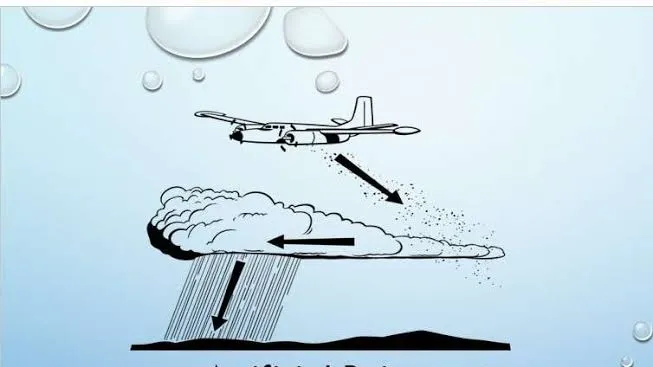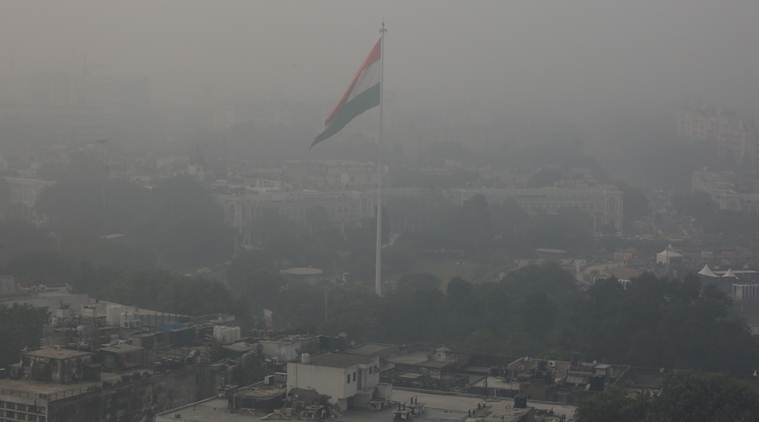Revolutionary ‘Cloud Seeding’ Technique Proposed by IIT-Kanpur to Combat Delhi’s Air Pollution Crisis

Revolutionary ‘Cloud Seeding’ Technique Proposed by IIT-Kanpur to Combat Delhi’s Air Pollution Crisis
In a groundbreaking move to tackle the relentless air pollution crisis in Delhi and its neighboring regions, a leading researcher at the Indian Institute of Technology, Kanpur (IIT-Kanpur) has put forward an innovative solution – “artificial rains” created through cloud seeding. This radical approach has garnered approval from the Directorate General of Civil Aviation (DGCA), though it’s important to note that specific meteorological conditions must align for this method to be effective. The potential benefits of “artificial rains” are generating significant interest as they promise temporary relief from the smog-choked skies that have plagued the national capital for years.
Professor Manindra Agrawal, a prominent figure in the field of environmental science, has spearheaded this proposal. In this article, we will delve deeper into the concept of cloud seeding, its potential to combat air pollution, and the meteorological conditions required for its successful implementation.
The Looming Air Pollution Crisis
Delhi, the heart of India, has been grappling with an alarming air pollution crisis for several years. The situation worsens each winter, earning the city an infamous reputation for having some of the world’s dirtiest air. Residents of the capital and its adjacent areas have endured severe health consequences, including respiratory ailments, cardiovascular problems, and a reduced quality of life. The annual winter smog engulfs the region, limiting visibility, closing schools, disrupting transportation, and causing immense economic and environmental damage.
The primary culprits behind Delhi’s air pollution woes include vehicular emissions, industrial activities, construction dust, and agricultural residue burning in nearby states. This toxic mix of pollutants forms a noxious layer over the city, often reaching levels classified as hazardous by global air quality standards.

The ‘Artificial Rains’ Solution
In response to the persistent air pollution crisis, Professor Manindra Agrawal and his team at IIT-Kanpur have proposed the use of “artificial rains” as a temporary relief measure. This method, known as cloud seeding, involves the introduction of certain substances into clouds to encourage rainfall. While cloud seeding is not a new concept, its application to combat air pollution is a groundbreaking idea.
Cloud seeding aims to disperse and wash away airborne pollutants, including fine particulate matter (PM2.5) and PM10, which are major contributors to respiratory problems and reduced visibility. By inducing rainfall, the pollutants in the atmosphere are captured by raindrops and brought down to the ground, providing a brief respite from the oppressive smog.
The DGCA’s Approval
The Directorate General of Civil Aviation (DGCA) has granted its approval for cloud seeding as a means to combat air pollution in Delhi and its neighboring areas. This marks a significant step toward implementing the “artificial rains” solution, as regulatory clearance is vital for any such endeavor. Professor Agrawal’s team can now proceed with the required preparations, although several meteorological conditions must align for the process to be effective.
The Science Behind Cloud Seeding
Cloud seeding is a scientific technique that manipulates clouds to enhance precipitation. It is typically used to mitigate droughts or increase snowfall in regions with water scarcity. The process involves the introduction of cloud-seeding agents, such as silver iodide, calcium chloride, or sodium chloride, into clouds.
When these substances are released into the atmosphere, they act as nuclei for water droplets to condense around. As more water droplets form, they become heavy and eventually fall as rain or snow. In the context of combating air pollution, the cloud seeding process can help cleanse the air by trapping airborne pollutants and carrying them to the surface.
Meteorological Conditions for Success
While the DGCA’s approval is a significant milestone, the success of cloud seeding as an anti-pollution measure relies heavily on specific meteorological conditions. Cloud seeding is most effective when the following elements are in place:
1. Adequate Cloud Cover: Cloud seeding requires the presence of suitable clouds that have the potential to release rain.
2. Proper Temperature: The temperature within the clouds should be at an appropriate range to encourage the formation of ice crystals or supercooled water droplets around the seeding agents.
3. Adequate Moisture Content: Clouds must contain sufficient moisture to generate rainfall.
4. Wind Patterns: Wind patterns play a crucial role in the distribution of seeded clouds and rain.
5. Topography: The geographical features of the region, such as mountains or valleys, can influence the effectiveness of cloud seeding.
Therefore, to achieve the desired results in Delhi and its neighboring regions, meteorological experts will closely monitor these conditions and execute cloud seeding operations when the circumstances are favorable.

Temporary Relief and Long-Term Solutions
It’s important to note that cloud seeding offers a temporary reprieve from air pollution. The rain induced through this method can wash away pollutants and dust from the atmosphere, providing a clean and clear environment for a limited duration, typically up to a week. However, this solution does not address the root causes of air pollution, which are deeply ingrained in the region’s industrial and agricultural practices.
To achieve lasting improvements in air quality, long-term strategies that tackle the sources of pollution are essential. This may include stricter emissions regulations, promoting cleaner transportation options, and transitioning to sustainable farming practices that discourage crop residue burning. While cloud seeding can serve as an emergency measure during peak pollution periods, it is not a substitute for comprehensive, sustained efforts to combat air pollution at its source.
Potential Environmental and Ecological Impact
Cloud seeding, though a promising solution, is not without potential environmental and ecological concerns. Introducing substances into the atmosphere may have unintended consequences, and thorough environmental impact assessments are crucial. The chemicals used for cloud seeding should be selected with care to minimize any adverse effects on the environment.
In addition, the impact on local ecosystems and water resources must be considered. The enhanced rainfall from cloud seeding could lead to an increased flow of water into rivers and reservoirs, affecting aquatic ecosystems and water management.
International Precedents
Cloud seeding has been used worldwide to manage weather patterns and enhance precipitation. China, for instance, has employed cloud seeding to alleviate drought conditions and clear the air of pollutants during major events, such as the Beijing Olympics. The United Arab Emirates has also experimented with cloud seeding to enhance rainfall in arid regions. These examples demonstrate that cloud seeding can be a viable technique to manipulate weather and air quality, though its effectiveness can vary depending on local conditions.
Public Awareness and Acceptance
Implementing cloud seeding to combat air pollution will require public awareness and acceptance. Informed consent and open communication with residents of the affected regions are crucial to ensuring that the process is not met with skepticism or opposition. Transparency in the selection of cloud-seeding agents, safety measures, and monitoring of environmental impacts will be essential to build public trust in this innovative approach.

Conclusion
The proposal of using cloud seeding to induce “artificial rains” and combat air pollution in Delhi and its neighboring areas represents a bold step toward finding solutions to the persistent smog problem. While the DGCA’s approval is a significant milestone, the success of this method hinges on specific meteorological conditions. Cloud seeding offers temporary relief from air pollution, but it is not a substitute for addressing the root causes of pollution.
Sustainable, long-term efforts to reduce emissions, promote clean energy, and encourage environmentally friendly practices are indispensable in the fight against air pollution. Cloud seeding can serve as a valuable tool for providing relief during peak pollution periods, but it should be part of a broader strategy aimed at achieving a cleaner and healthier environment for the residents of Delhi and its neighboring regions.




